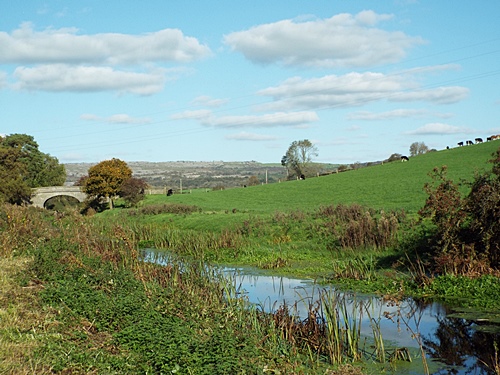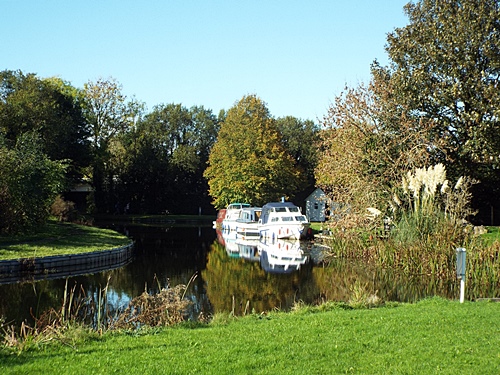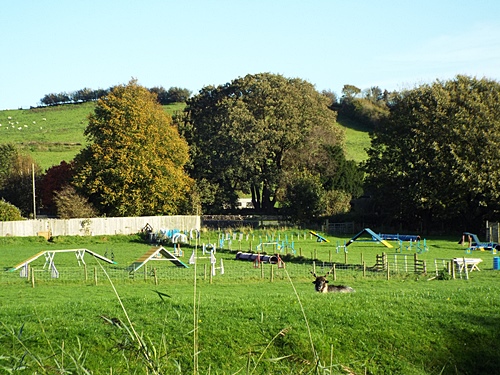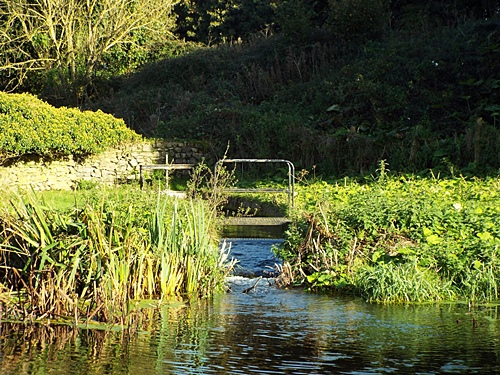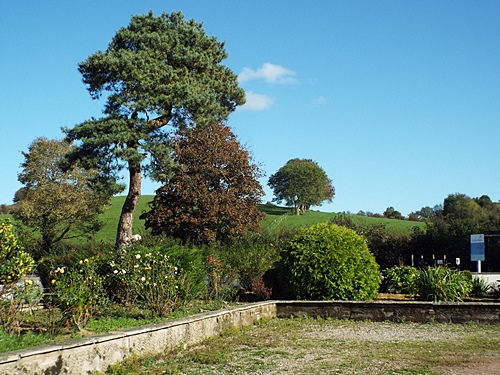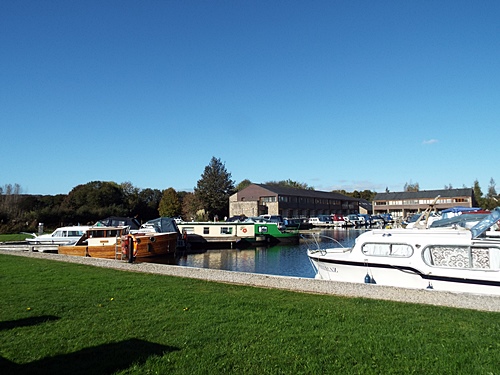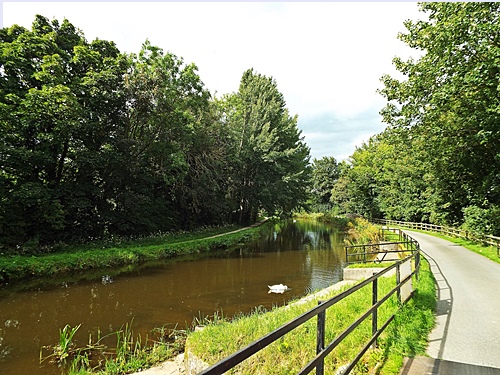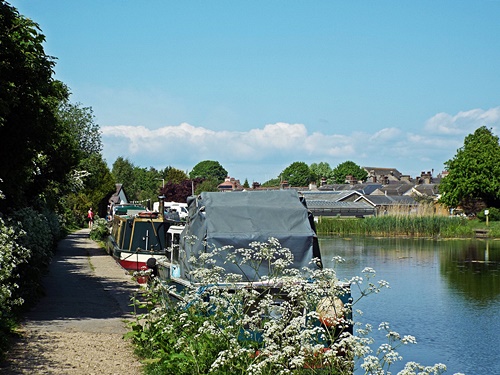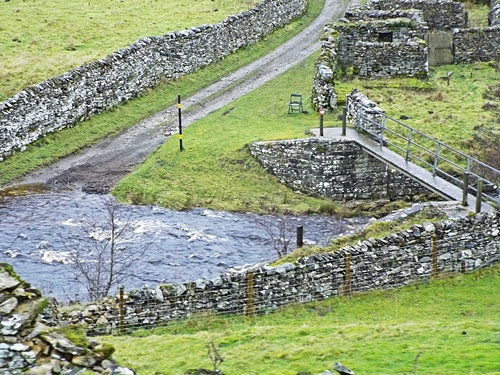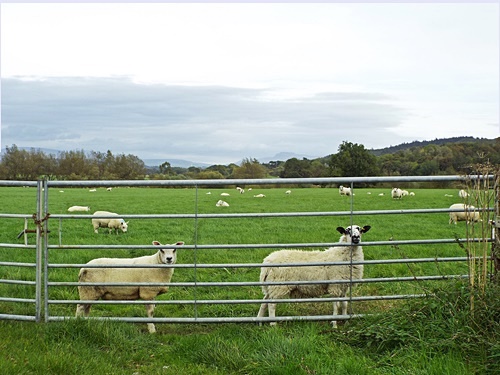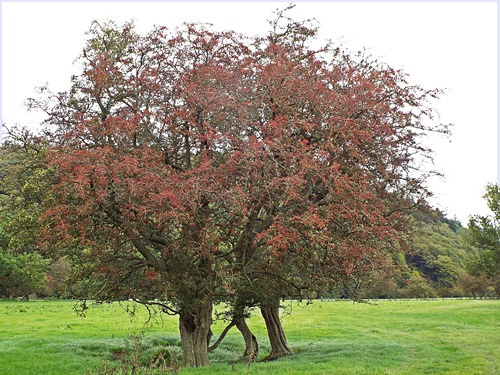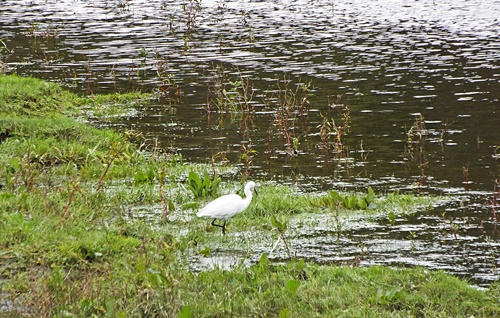Tewitfield Marina just north of Carnforth lies at the end of the navigable length of the Lancaster Canal and after doing a there-and-back walk south from there in mid August last year I decided I wasn’t going to explore any further north until maybe sometime this year, however a glorious day in mid October was just too good to waste so off I went, arriving at the marina at lunchtime.
After carrying its final commercial traffic during the 1940s the canal north of Tewitfield subsequently fell into a gradual decline and in 1953 the Docks and Inland Waterways Executive decided to close the 14-mile stretch between there and the canal’s end at Kendal. During the next ten years around five miles of waterway between the hamlet of Stainton and Kendal Canal Head were drained due to leakage, the last two miles in Kendal itself were completely filled in and all the lock gates at Tewitfield were removed to be replaced by concrete sills acting as weirs, with the locks themselves eventually becoming Grade II listed in 1983.
When the Ministry of Transport were developing plans in 1965 for the construction of the Lancaster-Penrith section of the motorway, which was completed in 1970, they weren’t prepared to finance the construction of bridges where the route would cross the canal. After a failed local campaign for the bridges to be built, which would have enabled the eventual restoration of the Northern Reaches, the canal was culverted at the three locations where the motorway crossed it and at three more locations, including Tewitfield, where other roads were re-routed as part of the construction, thus making the waterway north of Tewitfield completely non-navigable.
The path from the marina car park took me across the end of the navigable canal and under the A6070 to where the non-navigable length of the waterway began and within a hundred yards or so I came to the first of the eight disused Tewitfield locks, the only ones on the whole length of the canal between Preston and Kendal. Close to that first lock large areas of duckweed covered the canal’s surface and across the far side I spotted a heron perched on top of an old farm gate.
A distance further on the surface of the water was covered in something completely different – it wasn’t oil and I couldn’t tell what it was or where it was coming from but the patterns it made reminded me of those drawn in the froth on cups of coffee in cafes which are pretending to be a bit upmarket. Set at the side of the path close to the last lock were two huge lock gates minus their balance beams, and not far from there the canal came to a dead end, culverted where it was bisected by the M6.
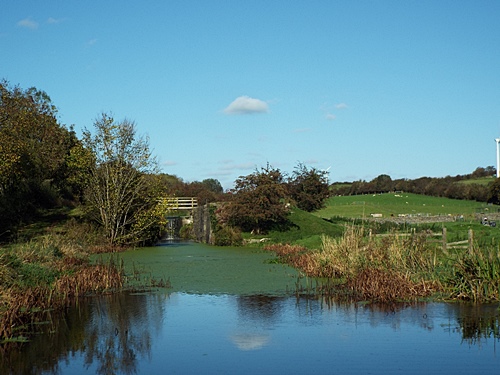
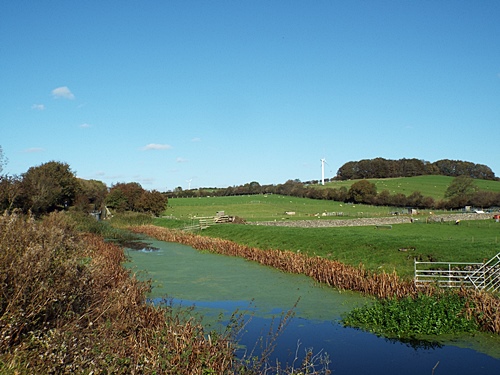


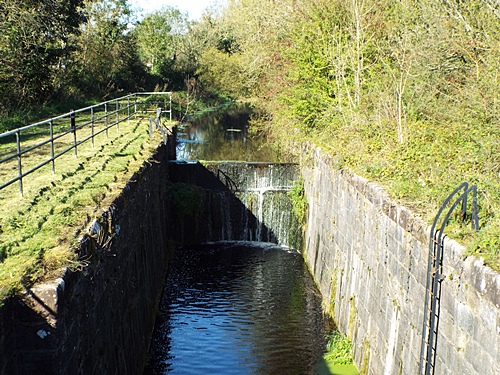


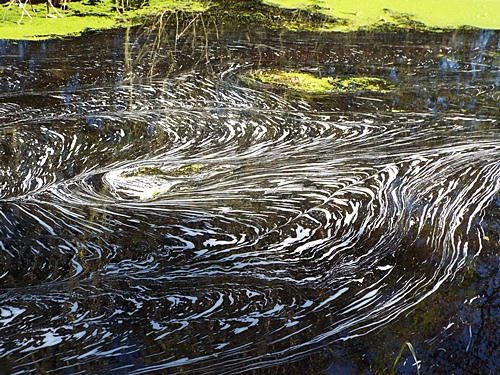


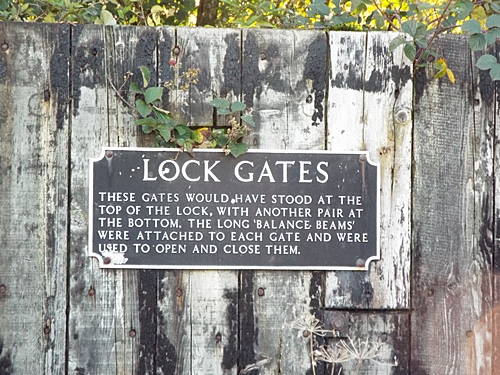
Just before the dead end the footpath veered away from the water to a lane which took me across the motorway and a short distance down to where the canal continued, and as I reached the next section I found that I’d walked out of Lancashire and was now in Cumbria. The first section of the canal had been very noisy as the M6 ran close to it, separated only by a line of trees, but this second section veered away from the motorway and it wasn’t long before the traffic noise disappeared and countryside peace and quiet reigned.



In contrast to the previous section of the canal this part was a bit overgrown in a few places and it was a while before the landscape became more open. Across the far side of the canal sloping fields were dotted with sheep and cattle while gaps in the trees and hedges on the left gave me views over to the distant areas around Warton Crag; other than a few random farm buildings across the fields there was no sign of any civilisation and I saw no-one.
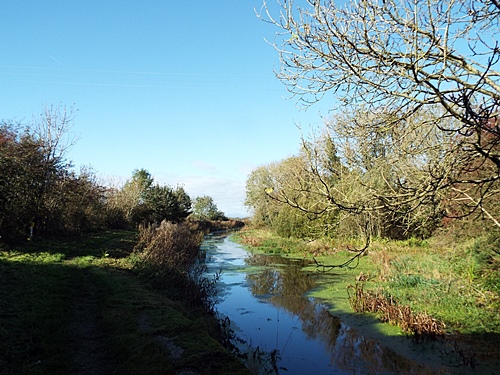


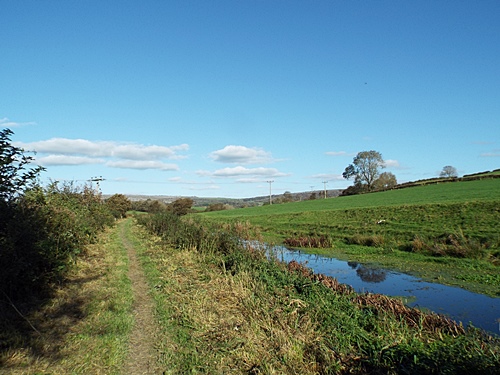
Just over three miles from Tewitfield Marina I reached Bridge 147 and decided to make that my turn around point; it was far enough to go, especially as we had to walk the same distance back again. Back on the noisier section of the canal, across the water between locks three and two, was a small paddock where a few llamas, alpacas and some small sheep were grazing, and close to the water’s edge was another heron – or it could possibly have been the one I’d seen earlier.
